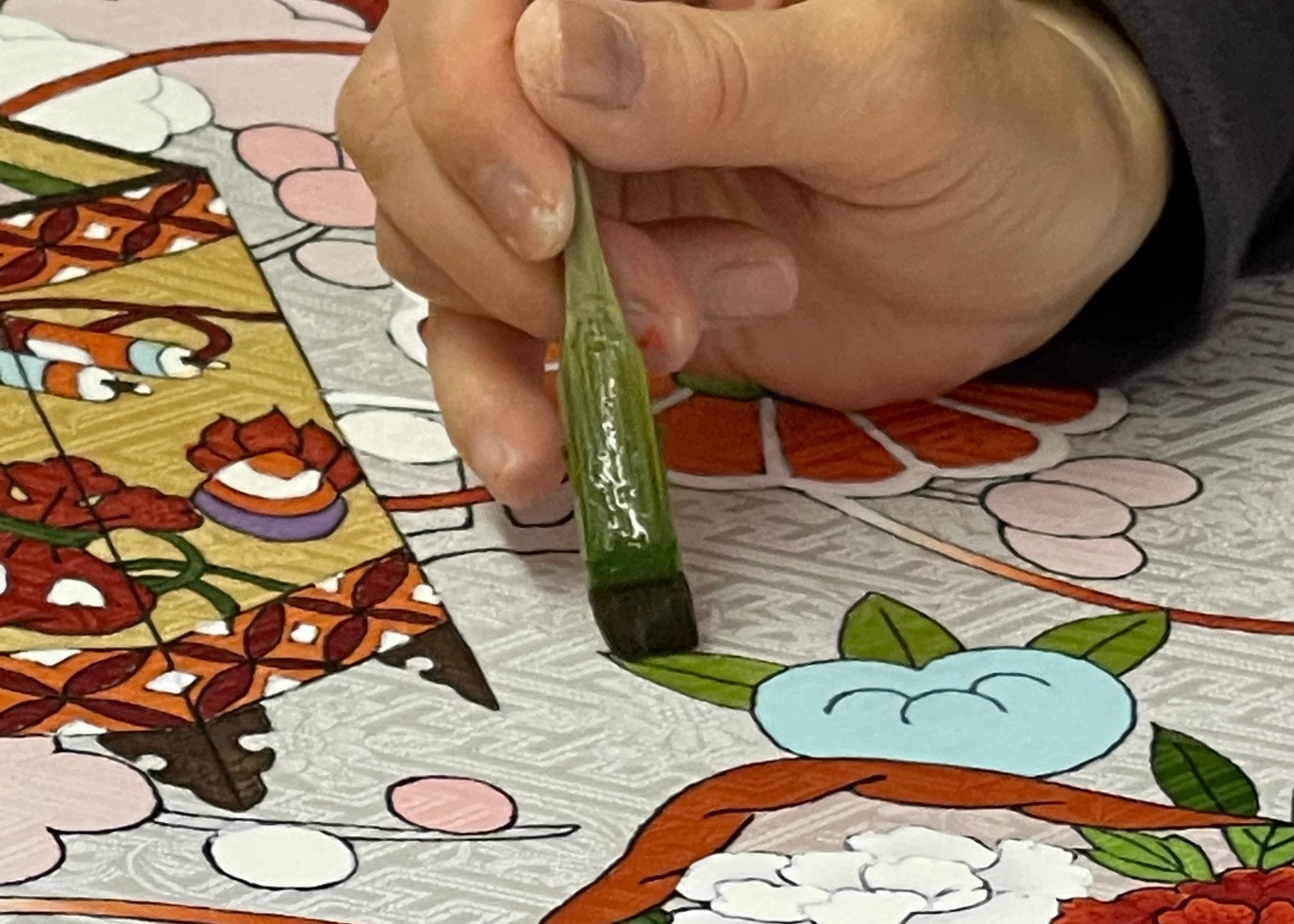The flash of gold or silver in the design of a Japanese kimono draws the eye, suggests wealth and class, and sparks another level of curiosity about the kimono wearer, her background, and where she’s going all dolled up!
Although it may seem like a modern embellishment, use of gold, silver or platinum metalics are quite traditional in the world of kimono. There are four techniques I’d like to highlight here.
1. Woven Metalics
Believe it or not, silk threads are wrapped in gold or silver before they’re woven into the kimono (or obi) fabric. They are used sparingly, normally to create shadow or a edged accent to the woven design on a darker color:
2. Embroidery
Of course, Japanese embroidery is an art unto itself. While I can’t speak to the many techniques, I know there are many books on the subject.. Except for wedding kimono, which often have an overall embroidered pattern, embroidery on even the most formal kimono is typically an accent embellishment. Couching is common, where gold wrapped silk threads are laid flat on the fabric and tacked down with contrasting thread (usually orange) along the edges of a petal, leaf, or other design elemant.
3. Stenciling
Just as paint would be applied with a stencil, often gold, silver or platinum paint may be used with a katagami stencil. A rice glue is pushed through the stencil and then the metalic paint can be brushed on top to accent a portion of the design.
4. Metal Leaf
Sometimes the metalic is actually real gold, silver or platinum leaf – a tissue thin sheet of metal that is applied on top of an adhesive (I hate to say “glue”) and then the excess is brushed away. This is usually used to outline a design detail and looks like a painted edging.



